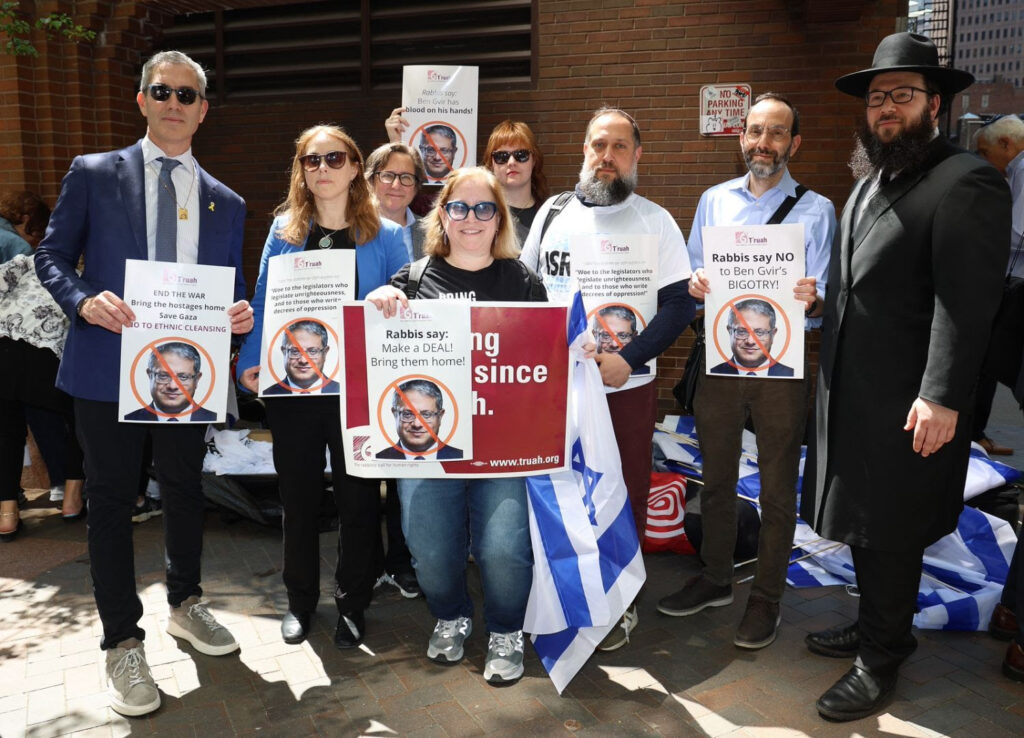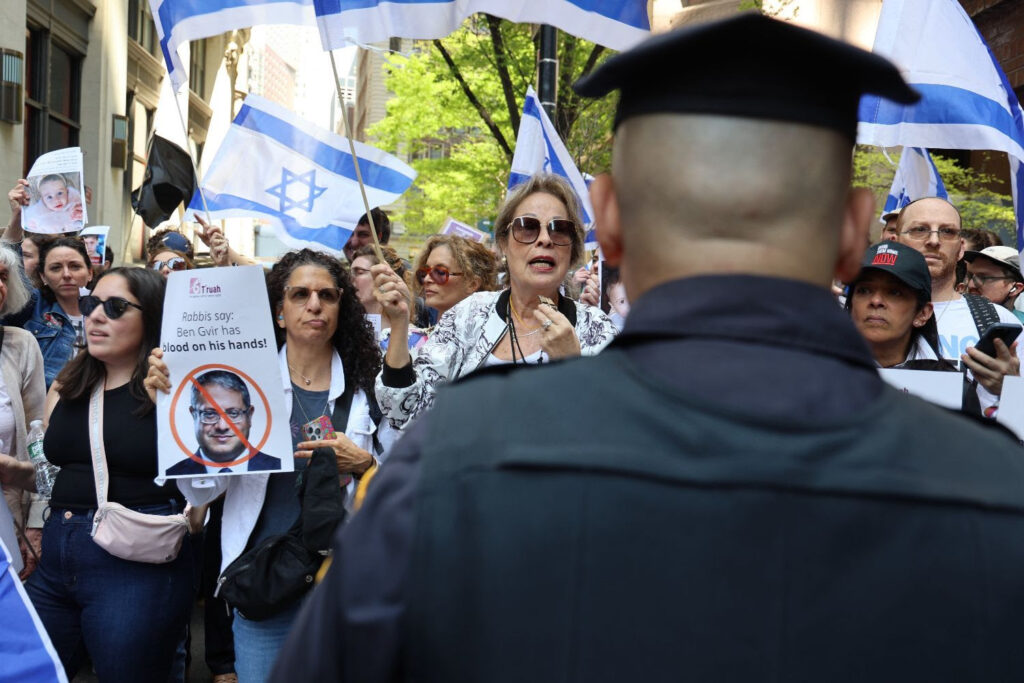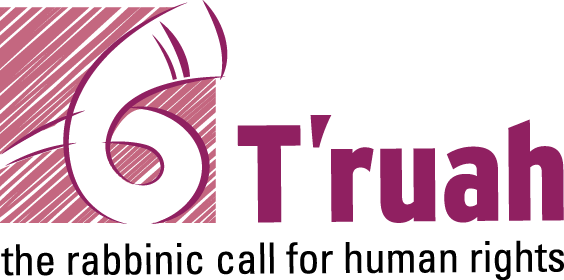Today is Yom HaAtzma’ut, Israel’s Independence Day. It’s a day for celebrating the establishment of the State of Israel, one of the greatest accomplishments of the Jewish people in the last century. We can take time to rejoice in the return to our homeland, in the revival of Hebrew as a language both of conversation and poetry, and in the role that the state has played as a refuge for Jews from around the world.
But this year in particular, there is also so much to mourn and to protest.
As I write, wildfires continue to burn near Jerusalem, with thousands of acres of forest destroyed. Thankfully, no lives have been lost. This is a natural disaster, but also a human-made one, as the coalition government rebuffed requests from the opposition to hold fire preparedness discussions in the past months, and as National Security Minister Itamar Ben Gvir blocked the purchase of firefighting helicopters. The fires have canceled many Yom HaAtzma’ut events, which families of hostages had already called for canceling.
The country is still reeling from Hamas’s brutal attacks on October 7. Dozens of hostages — both living and dead — remain in Gaza. In spite of mass protests against the war, in spite of the fact that more than 70% of Israelis want it to end, and in spite of the high ranking military personnel who have said publicly that this war has no clear aim, Prime Minister Netanyahu refuses to agree to a ceasefire and hostage deal.
Meanwhile, the IDF continues to bomb Gaza, leading to the deaths of hundreds of Palestinians, including children, since the ceasefire ended, on top of tens of thousands of deaths in the prior year and a half. The IDF has not allowed any aid into Gaza in two months, exacerbating the crisis of starvation and lack of medical care. The IDF has recently admitted wrongfully killing multiple aid workers who were trying to provide needed humanitarian assistance in Gaza.
Yesterday, on Yom HaZikaron, hundreds of newly bereaved Israeli families mourned loved ones who died fighting in Gaza. The announcement that tens of thousands of reservists may be called up threatens the lives of many more. Israelis understand that this government is abandoning them and their loved ones. This is why protesters confronted government ministers who showed up at Yom HaZikaron ceremonies yesterday.
In the West Bank, settler violence — often done with state weapons and state backing — is displacing Palestinians at the highest rate since 1967. In the past few weeks, settlers have set fire to homes in multiple Palestinian villages, and assaulted and shot at residents.
This war has exposed and worsened a rift in Israeli society — between those who want Israel to be a democracy for all of its citizens, including Palestinians, and those who promote a messianic, settler agenda and a state of perpetual war.
Just this week, a Kahanist mob attacked a Reform synagogue in Ra’anana, which was screening the Joint Israeli-Palestinian Memorial Ceremony. This moving annual event hosted by the Parents Circle and Combatants for Peace creates a space for bereaved families — both Israeli and Palestinian — to share their stories and to share in each other’s pain. For the rioters who showed up to assault attendees, this message of hope and human dignity is a threat.
These were not just “a few bad apples”; Netanyahu’s incitement of violence toward Palestinians and progressive Jews helped drive this attack. Neither Netanyahu nor any member of his coalition has condemned it.
What can we do in the face of violence and bigotry?
Today, like every other day of the year, loving, celebrating, and supporting Israel does not have to just look like eating falafel and wearing blue and white.
It can also look like pushing Israel to live up to its highest ideals.
It can look like protesting the current Israeli government, as hundreds of thousands of courageous Israelis have done for months in the streets of Tel Aviv, Jerusalem, and around the country.
It can look like what 200 Israelis and Jewish Americans did last week when Itamar Ben Gvir came to New York City.

protest Itamar Ben Gvir when he visited NYC.

“Itamar Ben Gvir, you are not welcome here.” (Photo: Harold Levine)
For hours, we made sure that he could hear our chants: calling for an end to the war and for a ceasefire deal that would bring home the hostages.
We made clear that Ben Gvir’s brand of hateful bigotry and corruption — not to mention his calls for ethnic cleansing and the resettlement of Gaza — do not represent us.
We did this while waving Israeli flags, because Israel does not belong to any politician or party, but rather to its citizens — all of them, including both Jews and Palestinians, and people of many other backgrounds.
Today, I invite you to celebrate Israel by advocating for a more progressive Israel. If you haven’t already, I hope you’ll take a moment to vote for the Hatikvah slate in the World Zionist Congress elections.
These elections are open to every adult Jew in the world, and they determine $5 billion of spending over the next five years. This is a chance to vote to direct money in line with your values — including democracy, pluralism, and an end to occupation. The Hatikvah slate will work for an Israel that lives up to its stated values, including for a two-state solution and end to the occupation, for gender equity, for religious and cultural pluralism, and for dignity for refugees and asylum seekers. (Read the Hatikvah slate platform.)
We will never stop fighting for a more democratic Israel and for a better future for Israelis and Palestinians.
When the Jews return to Jerusalem after the first exile and rebuild the Temple there, the Book of Ezra says that “the old men who had seen the first house, wept loudly at the sight of the founding of this house. Many others shouted joyously at the top of their voices.” (Ezra 3:12) A midrash wonders why the elders cried while others rejoiced:
The elders who saw the glory of the First Temple, in which the shechina (divine presence) dwelled, and saw the Second Temple in which the Divine Presence did not dwell were crying. But their children, who did not see the glory of the First Temple and saw the building of the Second Temple were joyful. (Pesikta Rabbati 35)
In the incomplete redemption of this moment, according to the Midrash, God chose to send only a bat kol — a divine voice — to the Second Temple, rather than to rest God’s divine presence there. The elders could see only what was missing — the shechina whose presence lent glory to the First Temple. Their children could see only the majesty of the new Temple.
To take in the whole picture, on Yom HaAtzma’ut or any day, we might strive to experience both the sadness and the joy — both to rejoice in what has been built, and to mourn what is lacking — and to recommit to restoring the divine presence throughout the land.
That’s what loving Israel looks like.
Yom HaAtzma’ut Sameach,

Rabbi Jill Jacobs (she/her)
CEO, T’ruah

